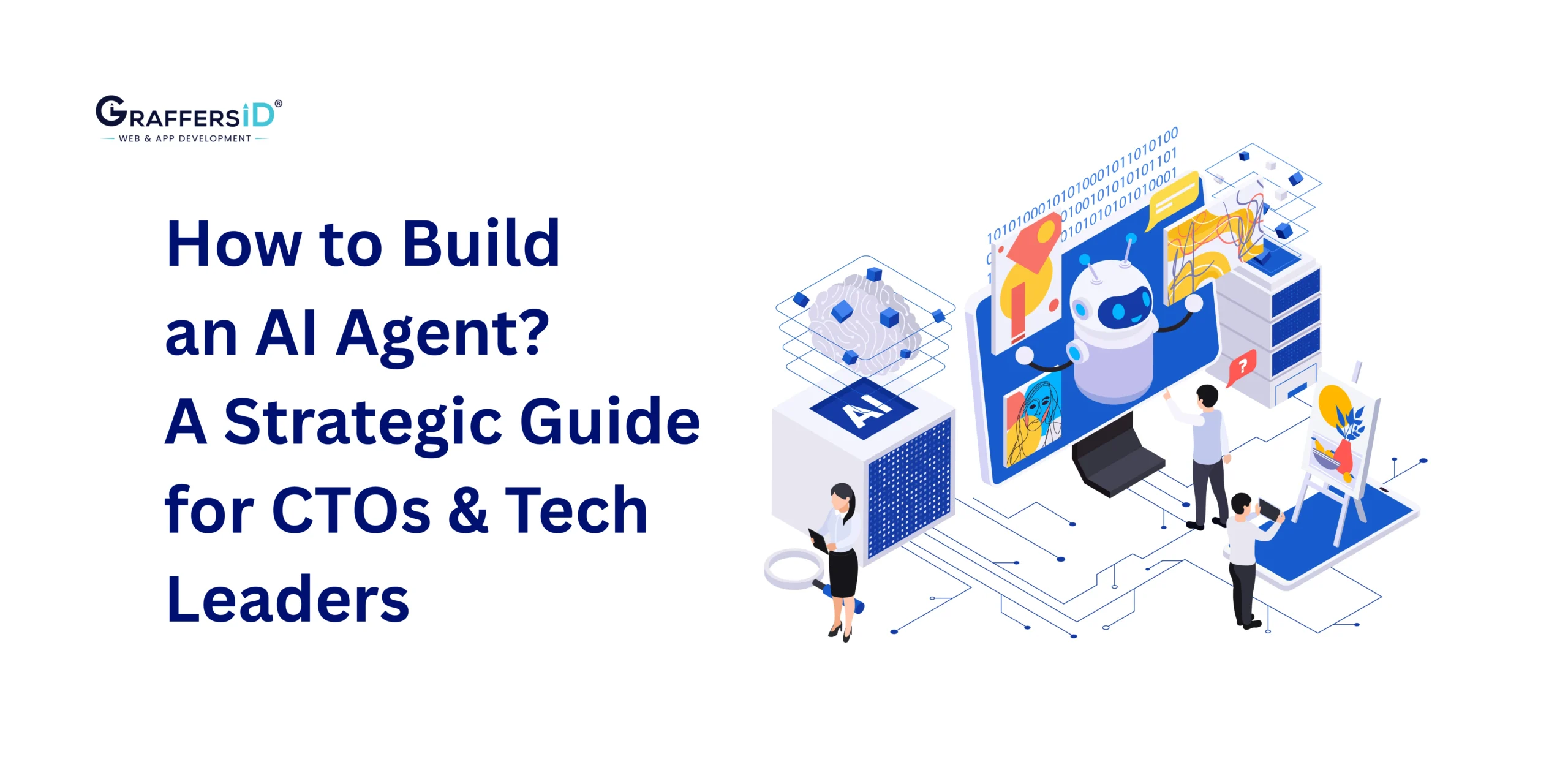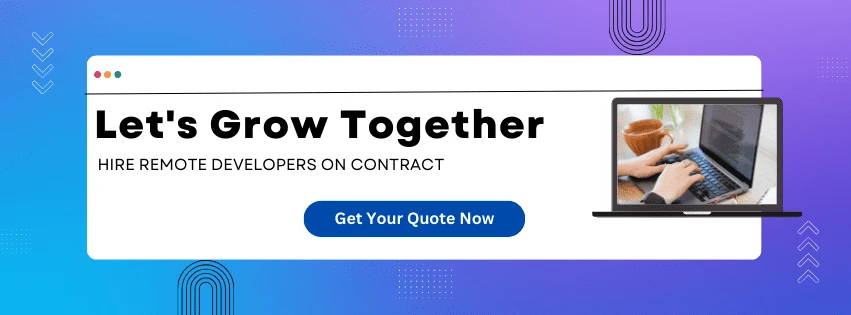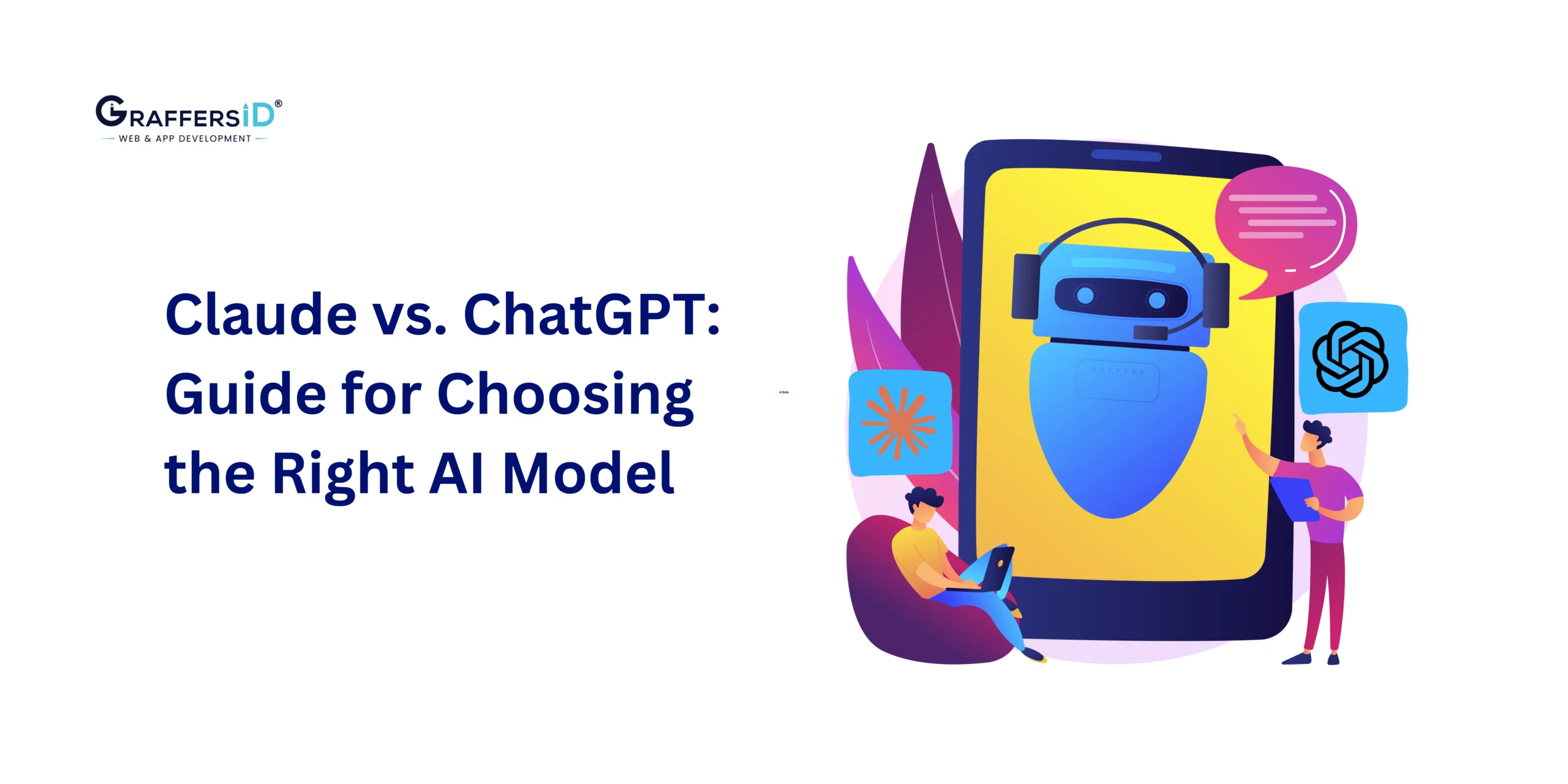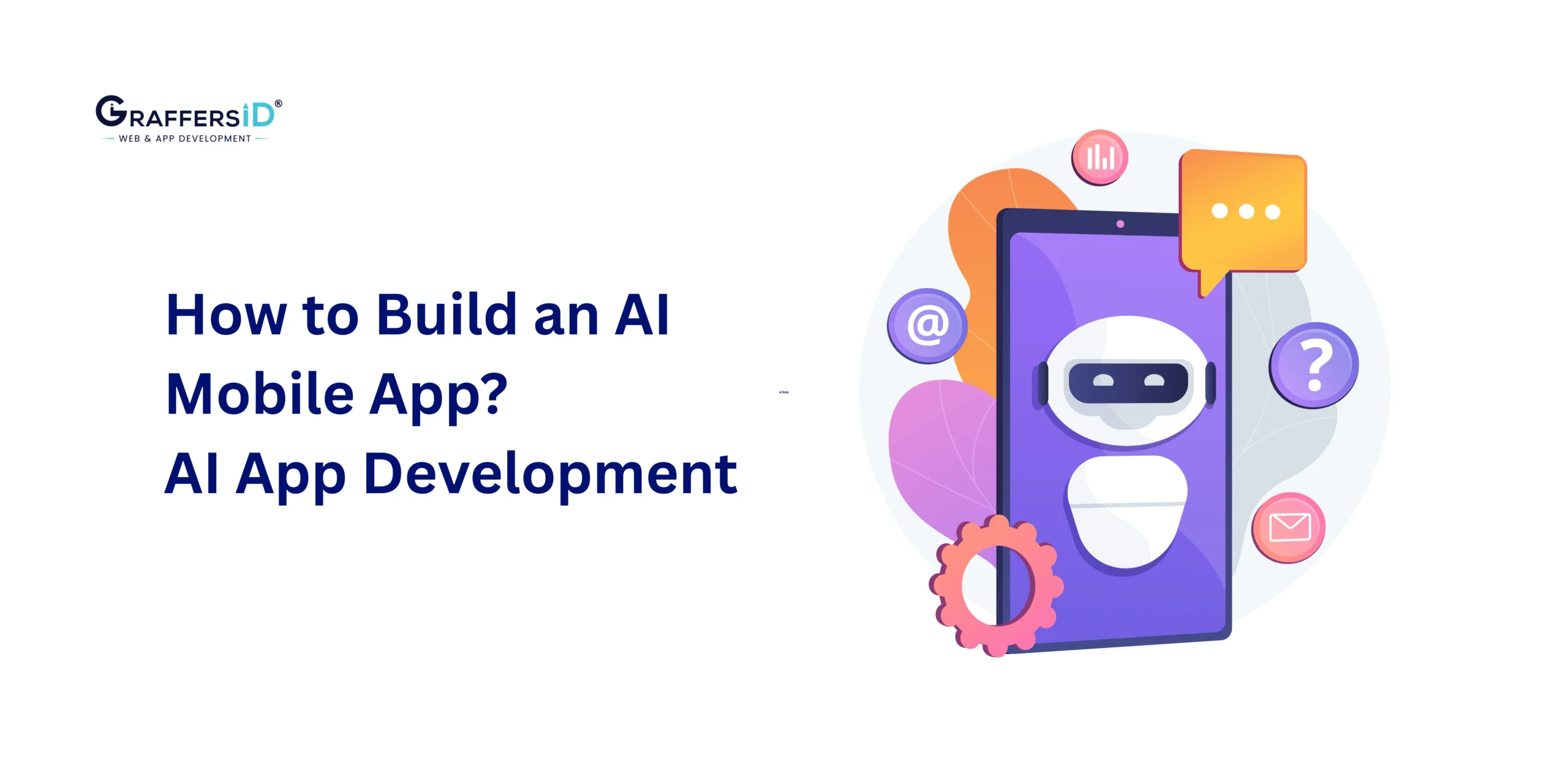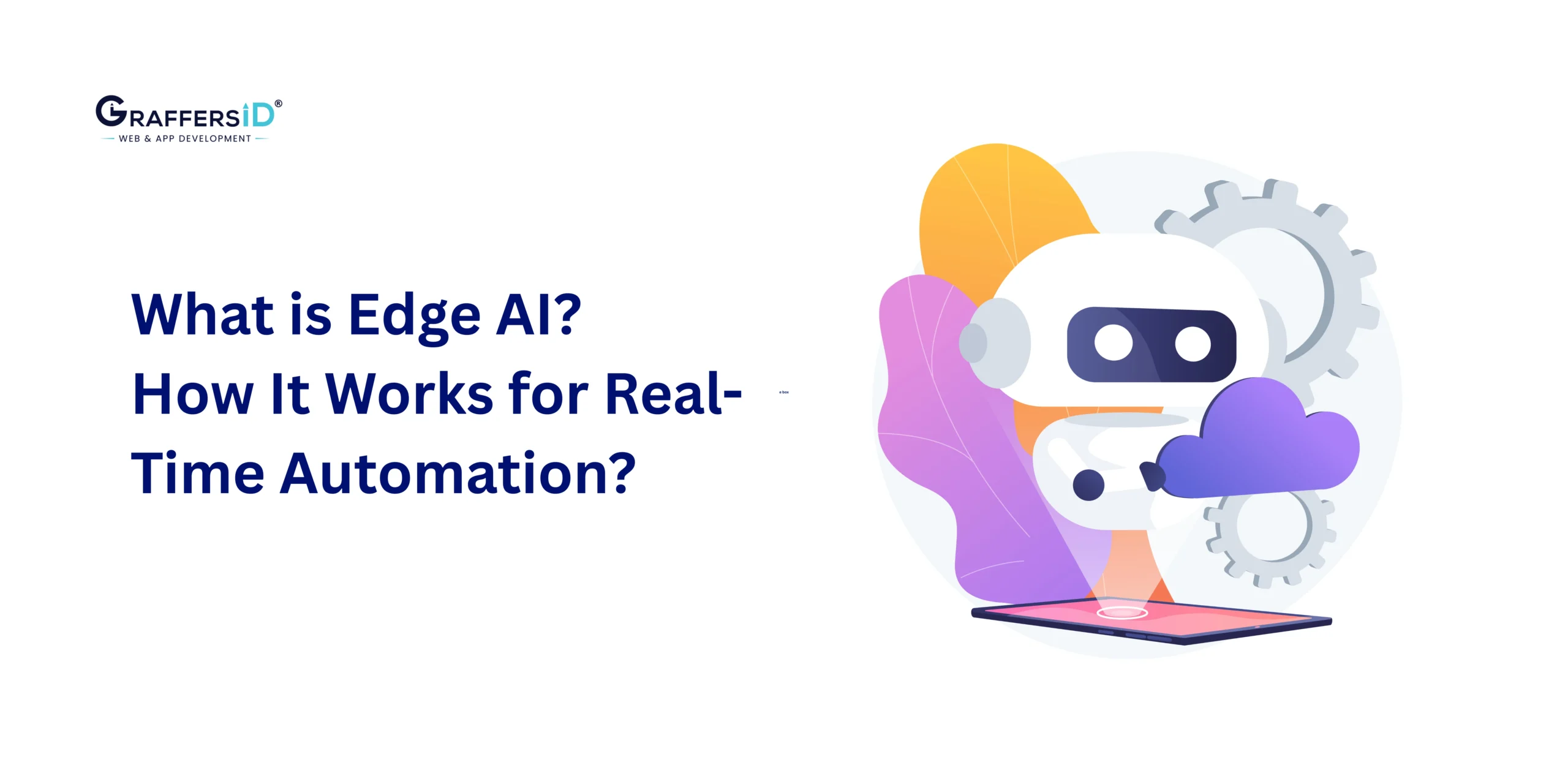Artificial intelligence in 2026 has moved beyond simple chatbots and rule-based automation. Today’s AI agents act as digital coworkers, capable of reasoning, making independent decisions, and continuously improving with real-world interactions.
For CTOs, product heads, and business leaders, AI agents are no longer optional. They’re becoming the backbone of customer personalization, operational efficiency, and product innovation.
This guide provides a step-by-step roadmap to building an AI agent in 2026, covering definitions, architecture, use cases, technical challenges, and strategic decisions that matter to executives.
What is an AI Agent in 2026?
An AI agent is an autonomous software system that can:
- Understand context (via LLMs, memory, and multimodal inputs).
- Reason and plan actions to achieve a defined objective.
- Take action by integrating with tools, APIs, and databases.
- Learn and adapt from every interaction.
Unlike legacy chatbots, AI agents in 2026 are goal-driven, multimodal, and proactive, designed to function as independent problem-solvers inside an organization.
Related: AI Agent vs. Chatbot: Key Differences, Use Cases & Future of Intelligent CX (2026)
Key Features of AI Agents in 2026
- Autonomy: AI agents operate without constant human oversight. Once deployed, they proactively manage tasks, adapt to new inputs, and optimize their behavior over time.
- Goal-Oriented Reasoning: Agents can plan a sequence of actions that lead toward achieving a goal, applying techniques like chain-of-thought reasoning and reinforcement learning.
- Context Awareness: Through embedded memory and contextual retention, agents can understand ongoing conversations, historical tasks, and user preferences.
- Tool Use: Modern agents integrate with external tools such as CRMs, APIs, databases, or browsers, allowing them to take action in real systems.
- Multimodal Input Handling: Agents can process and reason over various data formats like text, voice, video, or structured inputs (CSV, JSON).
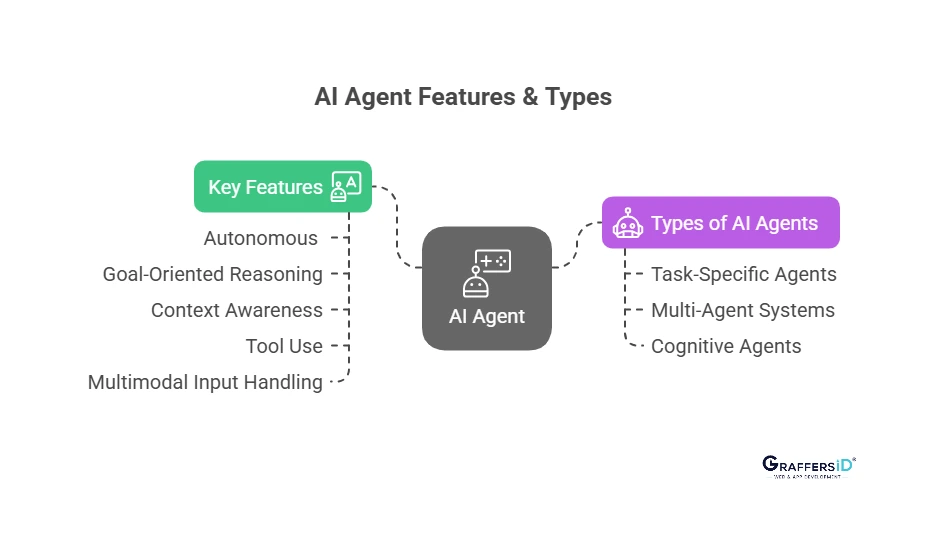
Types of AI Agents in 2026
- Task-Specific Agents: Focused on specific tasks like processing invoices, responding to support tickets, and summarizing emails.
- Multi-Agent Systems: Architectures where several agents collaborate to handle large, multi-step tasks with interdependencies.
- Cognitive Agents: Highly capable agents that combine memory, planning, and tool use to mimic human-level productivity in defined domains.
Top Use Cases of AI Agents in 2026
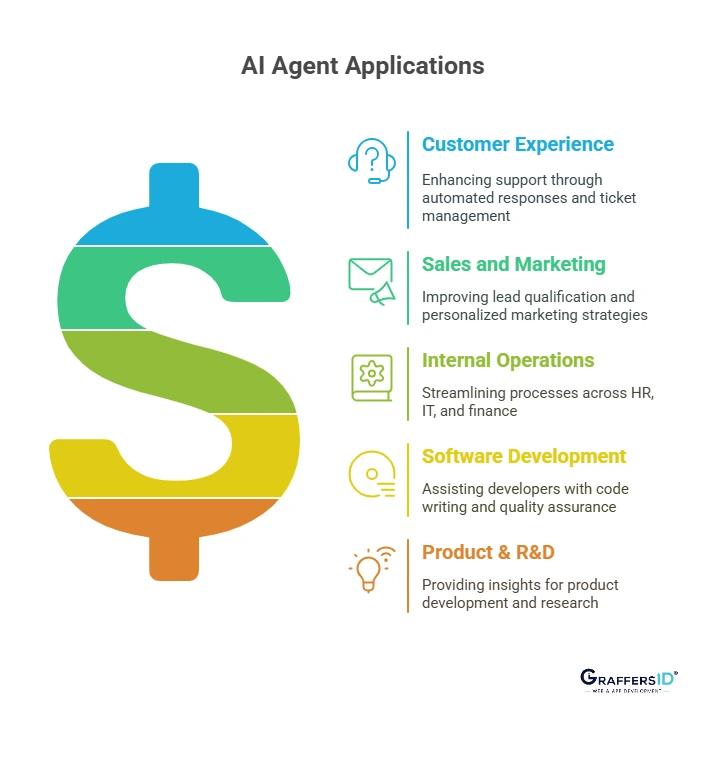
1. Customer Experience
- Use CRM data, internal documentation, and previous interactions to deploy agents that can respond to tier-1 and tier-2 support inquiries.
- These agents automatically log support tickets, respond to inquiries in real-time, and only refer difficult cases to humans.
2. Sales & Marketing
- AI agents use behavioral scoring models and preset ICP (Ideal Customer Profile) rules to qualify incoming leads.
- Create highly customized social media text, landing pages, and outreach emails.
- Offer strategic recommendations by analyzing data from marketing campaigns and creating visually appealing reports.
3. Internal Operations
- Agents can automatically trigger workflows to enforce standard operating procedures (SOPs) across HR, IT, and finance.
- For example, creating emails, setting up systems, and assigning training materials all become part of the smooth process of onboarding new employees.
4. Software Development
- AI agents help developers write boilerplate code, find errors, or recommend improvements based on security or performance data.
- Git, Jenkins, and code quality tools are integrated to offer full-stack assistance.
5. Product & R&D
- Create a summary of strategic insights by combining market trends, competitive data, and user input.
- Assist R&D teams in validating theories through research using both public and internal data sources.
Core Components of an AI Agent (2026 Architecture)
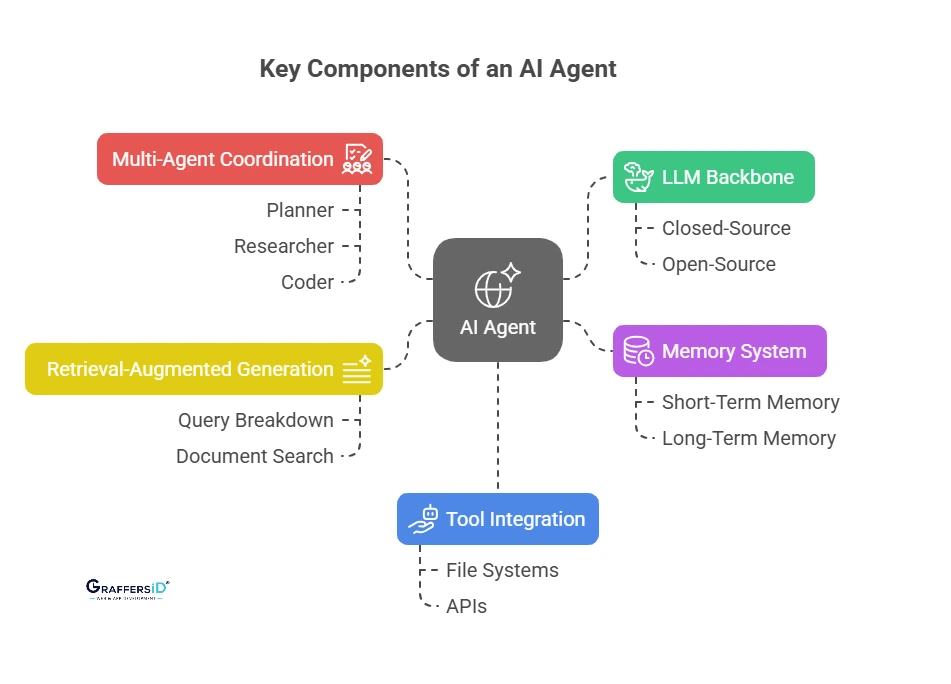
1. LLM Backbone (The Brain)
- Large language models like Claude 3, LLaMA 3, or GPT-4o power the agent’s basic intelligence.
- Decision-makers have to choose between:
- Closed-source (e.g., GPT-4o): High performance, limited customization.
- Open-source (e.g., LLaMA 3): Full control, self-hosting, higher setup cost.
- Prompt engineering, few-shot learning, and fine-tuning are some methods that help customize model behavior to specific cases.
2. Memory System
- Short-term memory: Maintains session-specific context.
- Long-term memory: Stores user preferences, prior results, and historical decisions.
- Implemented using vector databases like Pinecone, Weaviate, or Chroma, which allow semantic search and store document embeddings.
3. Retrieval-Augmented Generation (RAG)
- Injects external knowledge into responses.
- The system breaks down the user query, searches a document store, injects relevant content into the model prompt, and generates grounded responses.
- Crucial for industries where factual accuracy is mandatory (e.g., law, medicine, and finance).
4. Tool & API Integration (Action Layer)
- Enables execution beyond conversation.
- File systems, databases, APIs, and even browser automation must all be integrated. Requires secure sandboxes and access controls.
- Secure execution environments are required to isolate dangerous activities and implement access limits.
5. Multi-Agent Coordination
- Assigns roles (Planner, Researcher, Coder) for complex workflows.
- Use frameworks such as CrewAI for team-based workflows or LangGraph for managing stateful agents.
Related: Agentic AI vs. AI Agents: Key Differences, Real-World Examples, and Business Use Cases (2026 Guide)
How to Build an AI Agent in 2026 (Step-by-Step Guide)
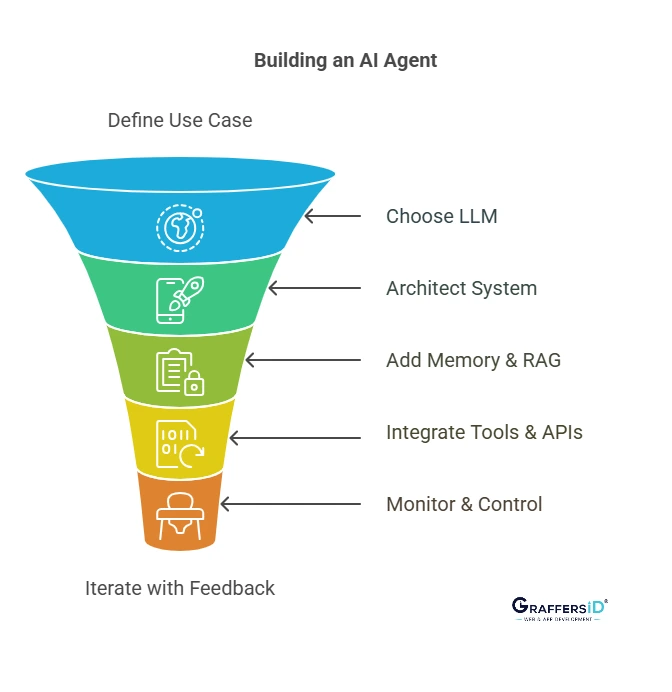
Step 1: Define the Use Case
- Determine the business function the agent will be deployed in.
- Identify function, inputs, outputs, and KPIs.
- Align goals with department heads to ensure business alignment.
Step 2: Select the Right LLM
- Compare the accuracy, cost, latency, and performance of various models.
- Analyze multi-turn conversation capabilities and token limits.
- Choose between hosted or SaaS (API-based) models.
Step 3: Architect the System
- Use a modular architecture to ensure flexibility.
- Choose between on-premises or cloud-native deployment based on compliance.
- Specify the layers: action execution, decision logic, vector retrieval, and input parsing.
Step 4: Add Memory & RAG
- Use vector databases for semantic search.
- Create and save vector embeddings in a retriever-friendly database.
- Continuously test and tune the retrieval accuracy and tune ranking mechanisms.
Step 5: Integrate Tools & APIs
- Agents should be allowed to trigger actions through APIs.
- Allow execution across CRMs, databases, and SaaS tools.
- Track and log actions for compliance.
Step 6: Monitoring & Control
- Include user feedback tools like thumbs-up/thumbs-down.
- Use real-time dashboards for real-time monitoring and rollback for hallucinations.
- Include analytics for error monitoring, latency, and usage.
Step 7: Iterate & Optimize
- Use dashboards to measure business impact (response accuracy, resolution time).
- Analyze user feedback, token usage, and prompt structure.
- Refine prompts, workflows, and integrations on a regular basis.
Build vs. Buy: Decision Framework for CTOs
- Build In-House: Best for core IP, security-critical industries, or long-term scalability.
- Buy/Subscribe: Ideal for MVPs, quick adoption, and low-risk experimentation.
- Decision-making factors:
-
- Customization needs
- Compliance requirements
- Time-to-market urgency
- Total cost of ownership (TCO)
Related: AI Assistants vs. AI Agents (2026): Key Differences, Features, and Use Cases Explained
Technical Challenges in Building AI Agents in 2026
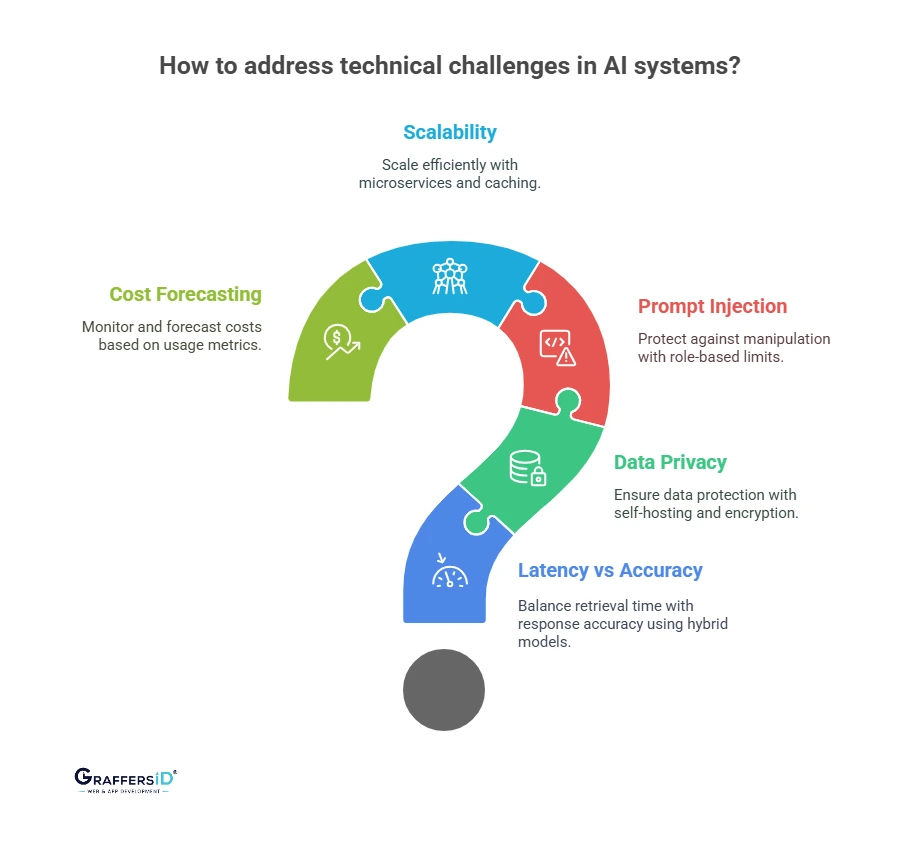
1. Latency vs. Accuracy
- RAG pipelines add time due to vector retrieval.
- Consider hybrid models that use cached responses or edge models.
2. Data Privacy
- When handling PII or regulated data, self-host LLMs.
- Use encryption, access controls, and audit logs.
3. Prompt Injection
- Protect against malicious user prompts that are intended to manipulate the agent.
- Use role-based limits and quick sanitization.
4. Scalability
- Scale using stateless microservices and distributed vector databases.
- Use caching, load balancers, and token optimizations.
5. Cost Control
- Monitor token usage and retrieval costs in real time.
- Forecast based on the number of users, interactions, and memory usage.
Conclusion
In 2026, AI agents are no longer experimental; they’re essential business infrastructure. By embedding autonomous agents into workflows, enterprises gain efficiency, accuracy, and a competitive advantage. The organizations that master AI agent development today will define their industries tomorrow.
At GraffersID, we help enterprises and startups build AI agents tailored to their goals. Our remote AI developers specialize in LLMs, NLP, and agentic workflows and are ready to extend your team.
